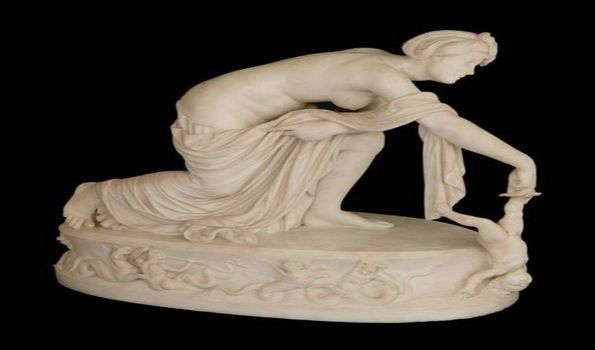In the annals of Greek mythology, few figures loom as large as Achilles, the legendary hero of the Trojan War. Renowned for his unparalleled skill in battle and his seemingly invincible nature, Achilles’ name has become synonymous with strength and prowess. However, behind the veneer of his legendary deeds lies a tale shrouded in myth and mystery, particularly surrounding the infamous Achilles heel.
According to myth, Achilles’ mother, the sea goddess Thetis, sought to grant her son immortality by dipping him in the sacred waters of the River Styx. Holding him by his heel, she submerged him in the mystical river, believing that every part of his body that touched the water would become invulnerable. However, Thetis overlooked one crucial detail – the heel by which she held him remained untouched by the sacred waters, leaving it vulnerable to harm.

Strangely, the Achilles heel myth finds no mention in Homer’s epic poem, the Iliad, which serves as the primary source of the legend of Achilles. In this ancient text, Achilles is portrayed as a formidable warrior, but there is no indication of any invulnerability or weakness associated with his heel. It is only in later retellings and interpretations of the myth that the story of the Achilles heel emerges.
One compelling piece of evidence supporting the idea that the Achilles heel story is a later addition to the myth lies in depictions of Achilles’ death in Hellenic art. In these artistic representations, Achilles is often shown with an arrow piercing his torso, signifying the fatal blow that ultimately led to his demise. Interestingly, alongside the wound to his torso, artists also depict an injury to his heel, suggesting that the myth of the Achilles heel had become integrated into the cultural imagination by this time.
The inclusion of the Achilles heel in these artistic portrayals raises intriguing questions about the evolution of myth and the interplay between storytelling and visual representation in ancient Greece. It suggests that the story of the Achilles heel may have originated as a later embellishment or interpretation of the original myth, added by subsequent generations to enhance the narrative and add depth to the character of Achilles.
Despite its origins as a later addition to the myth, the story of the Achilles heel has endured through the centuries, capturing the imagination of countless storytellers, artists, and scholars. It serves as a cautionary tale about the fragility of even the mightiest warriors, reminding us that no one is truly invincible.
In conclusion, the myth of Achilles’ invulnerability and his vulnerable heel is a fascinating example of how stories evolve over time, adapting to the cultural and artistic contexts in which they are told. While the origins of the Achilles heel myth remain shrouded in mystery, its enduring legacy continues to fascinate and captivate audiences around the world, ensuring that the legend of Achilles will live on for generations to come.
News
Congrats! Miss Nikki Baby Is Expecting Her Second Child With LiAngelo Ball (PHOTO)
The entrepreneur took to internet on July 28 to inform her followers of the exciting news. Miss Nikki — born Nikki Mudarris — posted a picture on Instagram with sheer material draped around her nude body, exposing her growing belly….
“Legal Implications for Diddy: Potential Evidence Explored in Court Proceedings”
“April Lampros Adds to Allegations Against Puff Daddy: New Lawsuit Reveals Disturbing Details April Lampros recently filed the latest in a series of lawsuits against Puff Daddy, bringing the total to eight accusations of sexual assault against the music mogul….
Mel Gibson EXPOSES Oprah’s Questionable Actions For Hollywood Elites ..
“Mel Gibson EXPOSES Oprah’s Questionable Actions For Hollywood Elites”: In a bombshell revelation that has sent shockwaves through the entertainment industry, acclaimed actor and filmmaker Mel Gibson has come forward with explosive allegations against media mogul Oprah Winfrey. Gibson, known…
BREAKING NEWS: Cassie Ventura OFFICIALLY ENDS Diddy’s Career With NEW Video Footage
The Shocking Revelations and Legal Troubles Surrounding Diddy. A recently released video showing Sean “Diddy” Combs physically assaulting his ex-girlfriend, Cassie Ventura, has sparked widespread outrage and reignited discussions about the numerous allegations against the music mogul. The video, obtained…
Joe Budden claps back at Eminem’s disses: “Guess what, I’ve outshined you for an entire decade!”
TҺе ɾаρρеɾ-tuɾ𝚗еԀ-bɾσаԀcаstеɾ wаs ρɾеᴠισusly а mеmbеɾ σf Һιρ-Һσρ ɡɾσuρ SlаuɡҺtеɾҺσusе wιtҺ Rσycе Ԁа 5’9″, Jσеll оɾtιz, а𝚗Ԁ CɾσσƙеԀ I, аs wеll аs ρеɾfσɾmι𝚗ɡ аs а sσlσ аɾtιst. Hе Һаs𝚗’t ɾеlеаsеԀ а𝚗y musιc sι𝚗cе 2016’s ‘Rаɡе & TҺе MаcҺι𝚗е‘ аlbum а𝚗Ԁ…
Snoop Dogg reveals for the first time about his past feud with legendary Eminem: “I felt like I was out of pocket”
In a recent interview, Snoop Dogg candidly addressed his past feud with Eminem, revealing that he has since extended an apology to the rapper. The disagreement arose last year when Snoop expressed his opinion that Eminem did not rank among…
End of content
No more pages to load











